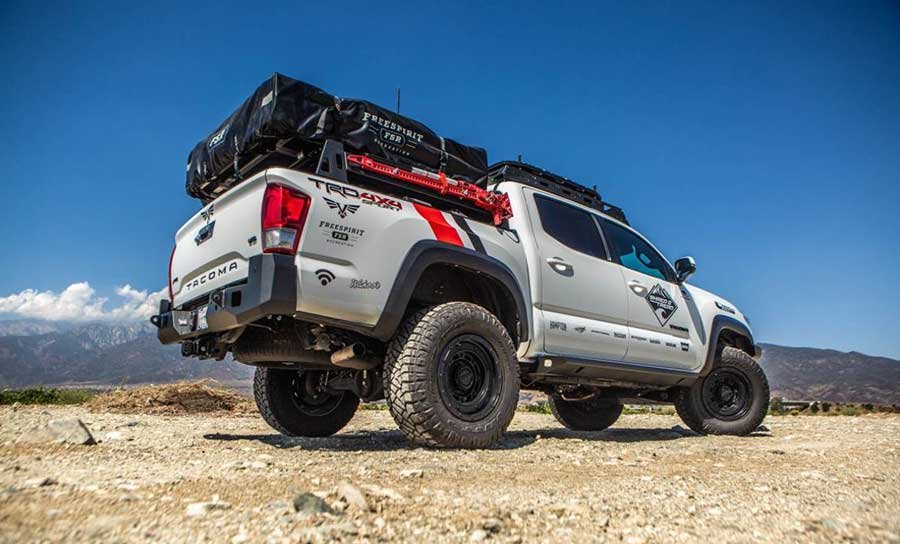Off-road driving can be dangerous because of the vast, remote expanses and climatic conditions of many regions. So, how to get your truck ready for an off-road drive?
Off-road driving is a unique driving routine. We recommend you familiarize yourself with basic 4×4 driving techniques or take lessons at a driving school. So, you do not find yourself in a sticky situation.
How to get your truck ready for an off-road drive
Provide for the overhaul and technical control of your car
The first thing to do is to check the date of your last technical inspection carried out. It would be inappropriate for the date to be exceeded when you leave on vacation as it could be the subject of a fine. In addition, the technical inspection allows you to ensure that your truck is safe and does not present any risk.
In the same way, refer to the maintenance booklet concerning the overhaul of your car. It may be worth planning one, especially if your last technical inspection dates back more than a year (compulsory only every two years).
To save costs before each departure on vacation, we advise you to invest in a truck diagnostic device. It allows you to carry out your inventory of the various mechanical parts yourself.
Check your truck’s tires and shock absorbers.
It is vital to check the conditions of your truck’s tires and shock absorbers, at the same time, you must choose the right tires for the terrain such as mud, rocks and gravel…. They must be ready to endure a heavy load on a long journey while considering the weather.

First, check your tires for any tears, scratches, or embedded objects. Also, check the tire pressure and adjust it if necessary. Please consider the manufacturer’s recommendations according to the vehicle’s load (visible in the maintenance booklet or at the driver’s side door). It is also ideal to check the condition of the shock absorbers before leaving on an off-road drive, especially on a long journey.
Pay attention to the control levels.
You then need to check the levels of the various fluids, particularly the brakes that make up the threat from a safety point of view. The level should ideally be as close to the max as possible, although this does not pose serious problems if it is between the minimum and the maximum (regular wear of the brake pads).
Here, you have to top it up. However, if the level is below the minimum, it shows a malfunction of the braking system. So, a visit to the mechanic is strongly recommended.
Then, it is necessary to do the same thing for the other liquids by relying on the marks to top up:
- Coolant: Check when the engine is cold
- Power steering fluid: Check with the engine off
- Windscreen washer fluid: a special mosquito repellent fluid can be useful
- Engine oil fluid: If necessary, top up with the same oil
Note that in case of high heat your engine may have difficulty cooling. If there is a coolant leak, it can even lead to engine overheating. We advise you to look at the date of your last oil change and the number of kilometers traveled since you have to do one before leaving on vacation to avoid damaging your engine.
Make sure the air conditioning works properly.
Air conditioning is not an element to be underestimated, especially in the case of powerful heat and on a long journey! If you feel that the cold air is slow to come in and the vents show signs of moisture, have your air conditioning system checked. It is also advisable to go to the workshop every year to change the refrigerant (about 20% loss per year).
Even if it seems difficult to carry out an overhaul of your car’s air conditioning system yourself, it is simple to check and change the cabin filter. If the latter is clogged, the airflow will be reduced causing longer demisting and less efficient ventilation (presence of dust, pollen, and exhaust gasses).
Check the condition of the windshield and wiper blades.
Remember to check that your windshield does not show any signs of impact, chips, or even cracks. It would affect your visibility. But a simple impact can quickly become a crack in the event of an impact.
So be careful during the check before you leave on vacation. If an impact is easily repairable, it is not the case for a crack that involves a change of windshield.
It is also necessary to check that your windshield wipers are working. It could well be that the rain or even the storm is pointing at the tip of its nose during the off-road drive, and rubbers that do not fully fulfill their functions will leave traces of water likely to hinder your visibility and put you in danger.
We advise you to change your windshield wipers before you leave on vacation to avoid any risk of discomfort during a heavy downpour. In addition, it allows you to be ready throughout the summer for your eventual weekend outings.
Loading the trunk of the car
On this side, a large car very often solves possible organizational problems. However, be careful not to clutter up your trunk too much. Otherwise, your rear visibility will be hindered.
A roof box can be useful to ensure a clear view, especially for long journeys that often involve a lot of motorways. You must also pay attention to the total load weight of your vehicle, which must not exceed the allowed limit shown on your vehicle registration document. If you exceed this weight, the road holding will be affected, by a turn or even a simple gust of wind.
Conclusions
Above are the tips to help you prepare your truck well before leaving on an off-road drive. If you have other recommendations, let us know in the comments. You can also share this article with your friends on social networks!






